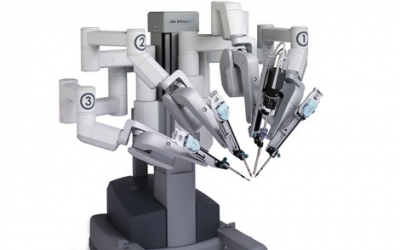3 questions you may have about robot-assisted surgery
 20:58 22 August, 2014
20:58 22 August, 2014A robot performing surgery may sound futuristic, but it’s not really new.
Robot-assisted surgery uses a mechanical arm and wrist to mimic a surgeon’s movement while the surgeon’s hands control the movement and placement of surgical instruments, says Michael Gong, MD, a surgeon at Hillcrest Hospital.
Unlike traditional open surgery, robotic surgery requires only four to five small, button-hole-size incisions. Through these incisions, a surgeon uses a powerful, high-precision endoscope – a tiny camera – and specialized surgical instruments.
“Robot-assisted surgery provides surgeons with all of the clinical and technical capabilities of traditional open surgery while enabling them to operate through only a few tiny incisions,” Dr. Gong says.
Here are three questions you may have about robot-assisted surgery:
What are the benefits of robot-assisted surgery?
Patients can benefit from robot-assisted surgery — it allows surgeons to perform complex medical procedures with great precision using a minimally invasive approach.
Patient benefits include:
• It’s a less invasive procedure — typically the surgeon makes four to six small incisions instead of several long incisions
• Shorter hospital stay and time needed for recovery
• Significantly less pain
• Quicker return to work and normal activities
• Decreased blood loss in some procedures
• Less scarring
Are all patients good candidates for robot-assisted surgery?
“There are no specific criteria a patient must meet to be a candidate for robot-assisted surgery,” Dr. Gong says. “Almost all patients who are planning to have surgery qualify.”
Surgeons use robot-assisted technology in a number of minimally invasive procedures. These include kidney and cancer treatment, urological and gynecological conditions and general surgery.
What are the advantages for surgeons?
Robot-assisted surgery uses leading-edge technology to help physicians to better serve their patients. For surgeons, the advantages include:
• A high-definition computer monitor that offers physicians improved visualization, enhanced dexterity and greater precision during surgery.
• A surgical stapling device is part of the unit
• The physician sits down during the procedure, which results in less fatigue.